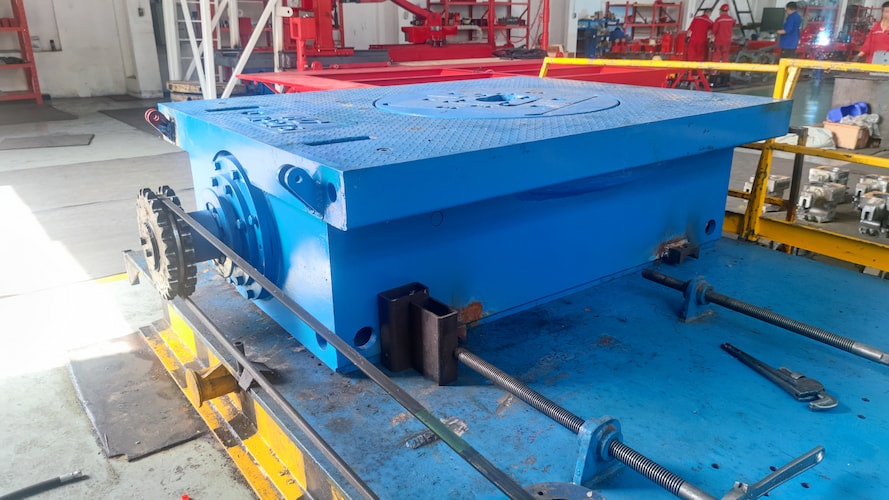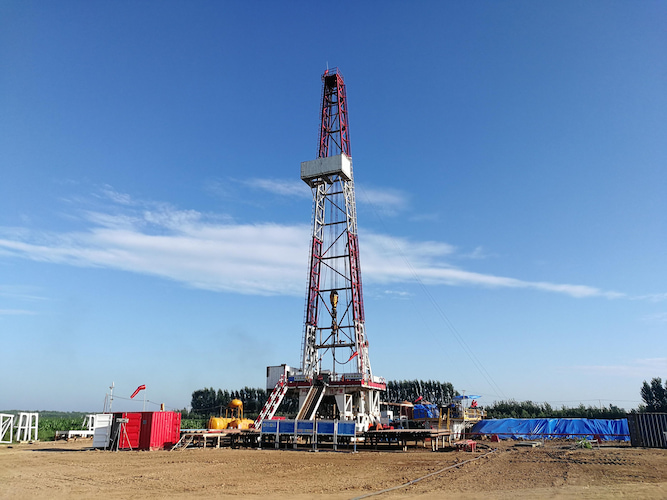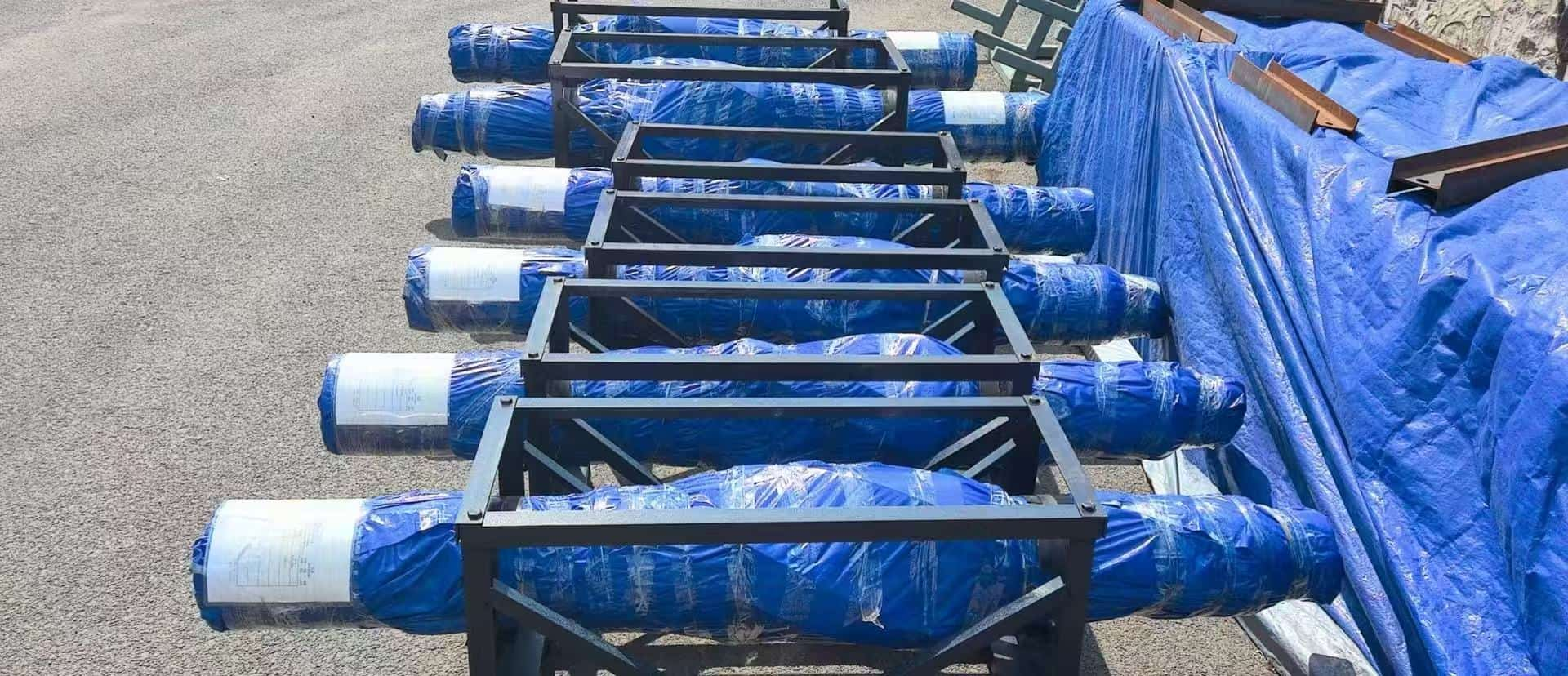What is a drill string stabilizer?
Aug 08, 2025
The Drill String Stabilizer is a critical tool installed on the drill string in oil and gas drilling, geological exploration, and other engineering projects. Its primary functions include stabilizing the drill string, controlling wellbore trajectory, reducing drill string vibration and wear, and ensuring efficient and safe drilling operations. Below is a detailed introduction:
I. Core Functions
Stabilizing the drill string and preventing deviationThrough contact with the wellbore wall, the stabilizer provides radial support for the drill string, reducing lateral oscillation of the drill string during rotation and drilling. This prevents the wellbore from deviating from the designed trajectory (e.g., trajectory control in directional or horizontal wells).
Controlling wellbore diameterThe outer diameter of the stabilizer is close to that of the drill bit, allowing it to scrape excess rock or mud cake from the wellbore wall. This ensures a regular wellbore shape, prevents wellbore enlargement or shrinkage, and creates favorable conditions for subsequent cementing and completion operations.
Reducing drill string wear and fatigueIt minimizes friction between the drill string and the wellbore wall, reduces bending and vibration of drill pipes and drill collars, extends the service life of drill tools, and lowers the risk of accidents such as drill string breakage and sticking.
Optimizing hydraulic performanceSome stabilizers are designed with diversion grooves or water eyes, which improve the flow path of drilling fluid, enhancing sand-carrying capacity and the efficiency of bit cooling.
II. Main Classifications and Structural Features
Drill string stabilizers can be categorized based on structural design, application scenarios, and stabilization principles:
Classified by Structural Form
Integral Stabilizer
Structure: Forged from a single piece of steel (e.g., alloy steel) and machined, with ribs integrated into the main body (no welded or assembled components).
Features: High strength and impact resistance, suitable for deep wells, hard formations, or high-rotational-speed drilling scenarios.
Application: Deep well drilling, hard rock formations, and high-build-rate sections of directional wells.
Insert-type Stabilizer
Structure: Hard alloy inserts (e.g., tungsten carbide teeth) or polycrystalline diamond compact (PDC) inserts are embedded in the ribs of the main body.
Features: Exceptional wear resistance, effectively handling abrasive formations (e.g., sandstone, conglomerate) and extending service life.
Application: Abrasive formations and horizontal well sections (requiring long-term contact with the wellbore wall).
Replaceable Sleeve Stabilizer
Structure: The main body serves as a base, with a detachable wear-resistant alloy sleeve for stabilization. Worn sleeves can be replaced without discarding the entire body.
Features: Cost-effective, reducing maintenance costs, suitable for medium to low abrasive formations.
Application: Conventional vertical wells and secondary/multiple use requirements in medium-deep wells.
Spiral Stabilizer
Structure: Ribs are distributed in a spiral pattern, minimizing contact area with the wellbore wall and ensuring smoother fluid passage.
Features: Reduces drilling fluid flow resistance and pressure loss, while providing both stabilization and diversion functions.
Application: High-displacement drilling and horizontal sections (reducing cuttings bed accumulation).
Classified by Installation Position
Near-bit Stabilizer: Installed closest to the drill bit (typically 0.5–3 meters above the bit), directly controlling bit deviation and serving as the core tool for trajectory control.
Middle Stabilizer: Installed in the middle of the drill string to assist in stabilizing the string and reducing overall bending deformation.
Top Stabilizer: Located near the wellhead or rotary table, primarily preventing oscillation of the drill string near the wellhead.
III. Structural Composition
Drill string stabilizers typically consist of the following components:
Main Body: A cylindrical metal structure, usually made of high-strength alloy steel, with wear and impact resistance.
Stabilizing Ribs (Blades): Protruding structures evenly distributed around the circumference of the main body (commonly 3–6 ribs). These are the core contact points with the wellbore wall, with rib shape and quantity designed based on drilling requirements.
Connection Threads: Equipped with drill pipe threads (e.g., API standard threads) at both ends for connection to the drill string (drill collars, drill pipes).
Diversion Grooves: Grooves between the blades for drilling fluid circulation. Some designs optimize groove geometry to reduce pressure loss.
IV. Key Technical Parameters
Outer Diameter: Matches the wellbore size, typically 3–5mm smaller than the wellbore diameter (e.g., a 215.9mm wellbore uses a 210mm stabilizer), ensuring stabilization while avoiding sticking risks.
Number of Ribs: Commonly 3, 4, or 6 ribs. More ribs improve stability but may increase drilling fluid flow resistance.
Length: Designed based on well section requirements. Near-bit stabilizers are usually shorter (0.5–1.5 meters), while middle stabilizers can be longer (1–3 meters).
Material:
Main Body: Mostly high-strength alloy steels such as 4145H or 4140H, tempered to provide good toughness and fatigue resistance.
Wear-resistant Components: Tungsten carbide (WC-Co), PDC inserts, ceramic coatings, etc., to enhance wear resistance.
Maximum Operating Pressure/Temperature: Designed to withstand high-temperature and high-pressure environments in deep wells. Conventional products tolerate temperatures ≥150°C and pressures ≥30MPa.
V. Application Scenarios and Selection Principles
Formation Characteristics
Soft Formations: Prioritize spiral or integral stabilizers to minimize formation disturbance.
Hard/Abrasive Formations: Insert-type stabilizers are mandatory to prevent rapid wear.
Well Type Requirements
Vertical Wells: Focus on deviation control, selecting high-stability integral or 4-rib stabilizers.
Directional/Horizontal Wells: Near-bit stabilizers require high-precision design, paired with spiral structures to reduce cuttings accumulation.
Drilling Parameters
High rotational speed (≥150rpm) drilling requires integral stabilizers with strong fatigue resistance.High-displacement drilling prioritizes spiral structures.
VI. Application Considerations
Selection Adaptation: Choose the appropriate stabilizer type based on formation hardness, well type (vertical/directional/horizontal), and drilling fluid properties.
Installation Position: Typically installed above the bit near the drill collar, or spaced according to drill string design to form a "full-hole drill string" structure.
Maintenance Inspection: Regularly check rib wear and thread integrity to avoid wellbore deviation or drill string damage due to stabilizer failure.
Coordination with Other Tools: Work synergistically with bits, drill collars, shock absorbers, etc., to optimize overall stability of the drill string assembly.
VII. Usage and Maintenance Guidelines
Pre-run Inspection
Check rib wear (replace if wear exceeds design limits).
Inspect the main body for cracks, deformation, or thread damage.
Ensure inserts are not loose or missing, and spiral channels are unobstructed.
In-use Monitoring
Real-time monitoring of torque and weight-on-bit fluctuations; anomalies may indicate stabilizer failure.
Regularly evaluate wellbore trajectory using Measurement While Drilling (MWD) data to verify stabilizer effectiveness.
Maintenance
Clean residual drilling fluid after use and inspect wear on critical components.
Replace worn inserts for insert-type stabilizers and timely replace sleeves for replaceable sleeve stabilizers.
The drill string stabilizer achieves the core goal of "stable drill string – regular wellbore – efficient drilling" through three synergistic functions: rigid support to suppress drill string oscillation, trajectory constraints to control wellbore direction, and hydraulic optimization to enhance sand-carrying and cooling efficiency. Its performance directly impacts drilling safety, wellbore quality, and operational costs, making it an indispensable tool in complex well drilling (e.g., shale gas horizontal wells, deep wells).
Read More





 Language :
Language : English
English Русский
Русский عربي
عربي
 GET A QUOTE
GET A QUOTE





 IPv6 network supported
IPv6 network supported